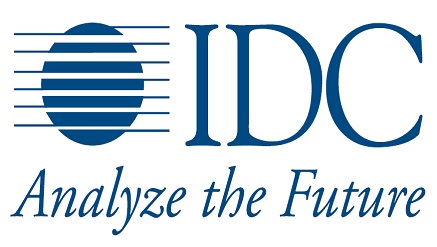E-Business
Worldwide Spending on 3D Printing Projected to Grow 22.3% by 2020

Worldwide purchases of 3D printers, materials, software, and related services are expected to total $13.2 billion in 2016.
According to a recent update to the Worldwide Semiannual 3D Printing Spending Guide from International Data Corporation (IDC), global spending on 3D printing will experience a five-year compound annual growth rate (CAGR) of 22.3% with revenues reaching $28.9 billion in 2020.
The United States will deliver roughly a quarter of worldwide 3D printing revenues throughout the 2015-2020 forecast period while the next three largest regions – Western Europe, Asia/Pacific (excluding Japan), and Japan – combined will deliver more than 50% of total revenues.
While the fastest growth will come from the Middle East and Africa (MEA) and Central and Eastern Europe (CEE) regions, Western Europe’s strong growth will significantly close the revenue gap with the United States by 2020. In fact, five of the eight geographic regions covered in the Spending Guide will see total revenue growth of more than 200% over the five-year forecast period.
“As the 3D Printing market matures, major trends are no longer confined to North America. Regions like Western Europe and Asia/Pacific are driving stronger levels of spending across different industries,” said Christopher Chute, vice president, Customer Insights and Analysis at IDC.
Discrete Manufacturing is the dominant industry for 3D printing, delivering more than two thirds of all worldwide revenues through much of the forecast.
And while all the industries examined in the Spending Guide will experience revenue growth of more than 100% over the forecast period, Healthcare will leap from the number 5 position in 2016 to the number 2 spot in 2020 with revenues growing to more than $3.1 billion. This move will be driven by strong investments from healthcare providers in both the United States and Western Europe.
“Thanks to the broader variety of 3D printers and materials that can be used, and also to lower prices, 3D printing is becoming more sophisticated and devoted to newer uses. In addition, existing use cases are increasing their market share.” said Carla La Croce, research analyst, Customer Insights and Analysis. “For example: dental printing is growing rapidly with the prospect of reaching one of the highest market shares in the near future (around 15% in 2020), as well as 3D printing for medical implants and devices (nearly 13% in 2020). Moreover, the 3D revolution is discovering new market niches, and new uses will arise in the future. IDC identifies the healthcare sector as the one with the highest growth potential.”
The use cases that will generate the largest revenues for 3D printing in 2016 are Automotive Design – Rapid Prototype Printing (more than $3.9 billion) and Aerospace and Defense Parts Printing (nearly $2.4 billion).
Tools and Component Printing will also emerge as a significant market in 2016. By 2020, Dental Printing will become a strong challenger for the number 3 position in terms of worldwide revenues while Medical Implant & Device Printing, Product Creation and Prototype Printing, and Prosthetics Printing will each generate worldwide revenues of more than $1 billion.
Purchases of 3D printers and materials combined will produce nearly two thirds of total worldwide revenues throughout the forecast period.
Revenues for computer-aided design (CAD) software are forecast to triple over the five-year forecast period while the market for on-demand parts services will nearly match this growth.
The gains in both software and on-demand parts printing are being driven by the rapidly expanding use of 3D printing for design prototyping and products that require a high degree of customization in non-traditional environments.
The Worldwide Semiannual 3D Printing Spending Guide quantifies the opportunity for 3D printers, which enable the creation of objects and shapes made through material that is laid down successively upon itself from a digital model or file. Revenue data is available for more than 20 use cases across 20 industries in eight regions. Data is also available for 3D printing hardware, materials, software, and services. Unlike any other research in the industry, the comprehensive spending guide was designed to help IT decision makers to clearly understand the industry-specific scope and direction of 3D printing expenditures today and over the next five years.
E-Business
Report Reveals DLL Hijacking Attacks have Doubled since 2023

Dynamic link library (DLL) hijacking is a common technique in which attackers replace a library loaded by a legitimate process with a malicious one.

It is used by creators of mass-impact malware, like stealers and banking Trojans, as well as by APT (advanced persistent threat) and cybercrime groups behind targeted attacks. Kaspersky reports that DLL hijacking attacks have doubled in the past two years.
Kaspersky has observed this technique and its variations, like DLL sideloading, in targeted attacks on organisations in Russia, Africa, South Korea, as well as other countries and regions.
To further enhance its protection capabilities against this threat, Kaspersky SIEM has introduced a specialised AI-based subsystem that continuously analyses information about all loaded libraries.
The new feature has already proven effective, helping to detect an attack by the APT group ToddyCat. It enabled the threat to be identified and blocked at an early stage, preventing any impact on the targeted organisations. The model also uncovered attempts to infect potential victims with an infostealer and a malicious loader.
“We are seeing DLL hijacking attacks become more common, where a trusted program is tricked into loading a fake library instead of the real one. This gives attackers a way to secretly run their malicious code.
“This technique is difficult to detect, and this is where AI can help. Using advanced protection techniques empowered with AI is now essential to staying ahead of these evolving threats and keeping critical systems safe,” says Anna Pidzhakova, Data Scientist at Kaspersky’s AI Research Center.
Securelist has published two related articles: the first explains how a machine-learning model was developed to detect DLL hijacking attacks, while the second describes how this model was integrated into the Kaspersky SIEM platform. The updated Kaspersky SIEMnow features AI functionality for detecting signs of DLL hijacking attacks, improving detection efficiency.
E-Business
Meta, NDPC Resolve $32.8m Privacy Dispute Out of Court

Meta Platforms, Inc., has, reconciled its differences with the Nigeria Data Protection Commission (NDPC) in the suit it filed to challenge NDPC’s $32.8m fine imposed against it.

The legal dispute between Meta and the NDPC ended after both sides agreed on terms to settle the $32.8 million fine earlier imposed on the company.
On February 18, 2025, the NDPC fined Meta $32.8 million and issued eight corrective orders for allegedly violating the privacy rights of Nigerian users through behavioural advertising practices on Facebook and Instagram.
At Monday’s proceedings before Justice James Omotosho of the Federal High Court, Abuja, Fred Onuobia, SAN, Meta’s counsel, informed the court that the parties had signed terms of settlement dated October 30 and filed on October 31.
“We adopt the terms of settlement and ask my lord to enter them as the judgment of the court,” Onuobia said.
Adeola Adedipe, SAN, Counsel for the NDPC, did not oppose the application.
Justice Omotosho then adopted the agreement as the court’s judgment and commended both parties for choosing to resolve the matter amicably.
“The terms of settlement entered by the parties in suit number FHC/ABJ/CS/355/2025, dated October 30 and filed October 31, 2025, are hereby adopted as the judgment of this court,” the judge ruled.
The decision ends months of litigation after Meta challenged the NDPC’s fine and enforcement orders through a judicial review, claiming the agency acted beyond its powers and failed to follow due process.
After several adjournments to allow for discussions, both sides eventually reached a mutual resolution.
The NDPC’s case against Meta is one of its major enforcement actions under the Nigeria Data Protection Act, signed into law by President Bola Tinubu in June 2023, which seeks to strengthen the protection of Nigerians’ data privacy rights.
E-Business
World Economic Forum Head Predicts AI, Crypto Bubbles

Large investments in artificial intelligence and cryptocurrencies could lead to the development of bubbles, according to Børge Brende, president, World Economic Forum (WEF).

Børge Brende, president, World Economic Forum
“There is definitely a geopolitical disorder … But even in the situation of geopolitical disorder, the global economy has been incredibly resilient – not necessarily in Europe but in India, China and the USA,” Brende said in Berlin.
He noted that this was being fuelled by investments in new technologies like AI.
“This year has seen $US500 billion ($A762 billion) of investments in AI alone. So, what we can be worried about is that there may be bubbles developing, be it a bubble on crypto or an AI bubble,” Brende said.
The WEF head said investors need to be patient with these investments.
But he also said that frontier technologies would be the new drivers of growth.
“We will also need to make sure that the new technologies and the benefits trickle down. We could even see productivity gains of 10 per cent in the coming decade. And productivity is prosperity,” Brende said.
He described the new technologies as “a big paradigm shift” and predicted breakthroughs in medicine, synthetical biology, space and energy.
“AI can accelerate processes so quickly,” he said.
The Norwegian has taken over from WEF founder Klaus Schwab.
The forum holds an annual conference in Davos in the Swiss Alps attended by world political and economic leaders.
The 56th conference is scheduled for January 19-23, 2026.
Brende also expressed concern about global crises and conflicts.
“There is definitely a geopolitical disorder: the world order we had is not there anymore. What is the next world order? Hopefully not the law of the jungle,” he said.
And, in a reference to current US tariff policy, he said that uncertainty was the highest tariff.
“One of my worries is that global investments are going down. We need to re-establish an environment for investments,” he said.
Brende said the current competition between the United States and China was “basically a competition for hegemony or dominance in technology. The country that leads in new technologies – be it quantum, superintelligence, AI, autonomous vehicles or synthetical biology – will also be the most powerful nation coming out of this century,” he predicted.
And he called for multilateral action to deal with “problems that don’t travel with a passport,” including pandemics and cybercrime.
The world is becoming more complicated with different groups forming, Brende said.
He pointed to a G4 of the US, China, Europe and India, followed by fast-growing economies like Indonesia, Malaysia, Nigeria and Brazil.
“It’s going to be a renaissance for mega-regional, so-called plurilateral, deals. But the world is going to be more complicated. There are going to be more suboptimal, not necessarily cost-effective solutions. There is going to be more friendshoring,” he said.

 E-Business3 days ago
E-Business3 days agoMeta, NDPC Resolve $32.8m Privacy Dispute Out of Court

 E-Financial3 days ago
E-Financial3 days agoFirstBank, Verve Launch Flash Promo with Free Debit Cards Nationwide

 E-Financial3 days ago
E-Financial3 days agoCBN Says High Bank Fees, Multiple Taxes Hamper Businesses

 News3 days ago
News3 days agoUK’S Mobilist Facilitates Secondary Sale of Listed Shares in InfraCredit

 E-Financial3 days ago
E-Financial3 days agoNELFUND Student Loan Applications Surpass 1m in Under a Year

 E-Financial2 days ago
E-Financial2 days agoZachXBT, Crypto Investigator Lists Nigeria, Others as Worst Jurisdictions for Scam Victims

 General News3 days ago
General News3 days agoAI Should Be an Enabler, Not a Replacement for Human Creativity – Dr. Lakinbofa Goodluck

 Telecom2 days ago
Telecom2 days agoFUNAAB 500-Level Student Wins 5th Brand New Car at MTN Pulse Campus Invasion















